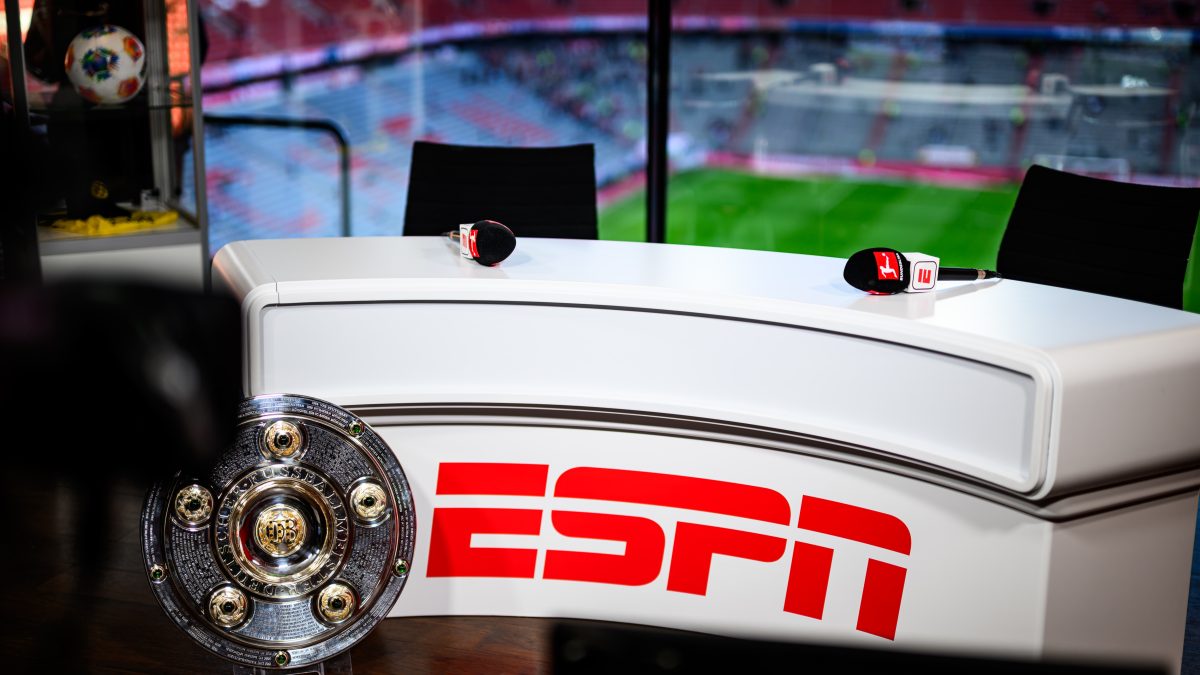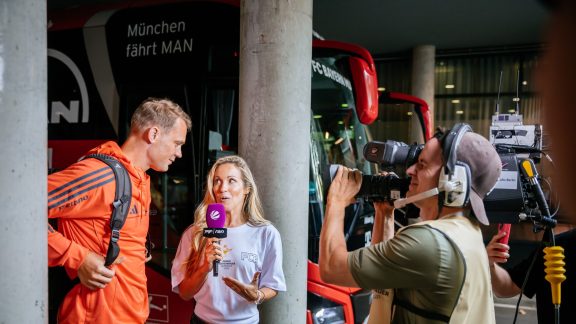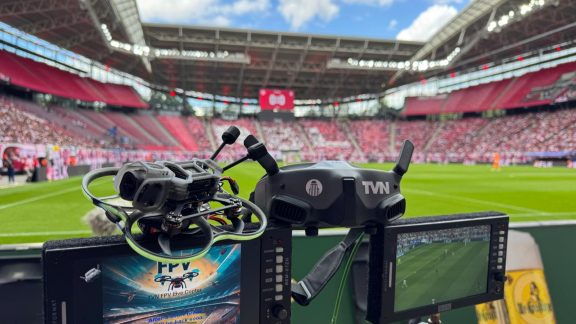“Der Klassiker”: showcase for the new media product

24 October 2024 – The latest “Der Klassiker”, the match between old FC Bayern München and Borussia Dortmund, was much more than a sportive culmination point during the first leg of the season. The match was broadcast in over 200 countries – proof of the Bundesliga’s global allure and the appeal of its media product. With 13 national and international media partners present, participation at the Allianz Arena was more globally diverse than ever. Working hand in hand with the media partners and both clubs, the DFL was able once again to make “Der Klassiker” a showcase for innovations that are part of the new 2025-26 media product.
New integrations and perspectives
The Camera Top Plus concept, comprising more than 30 individual cameras such as the Bus Cam and RefCam, gave viewers unprecedented insight into the activities, from the arrival of the teams through to key moments on the pitch. The new so-called Tentpole Match Assets play a pivotal role in all this: The beginning of the broadcast with moderators positioned close to the pitch, the Pitch Flash Interview directly after the final whistle or the interview after the bus arrival all set new standards in terms of authenticity and closeness to the game.
Full ESPN production from Munich
USA media partner ESPN had come up with a new idea for “Der Klassiker”: in their most comprehensive in-stadium production since the beginning of the cooperation between the broadcaster and the DFL, ESPN used every single Tentpole Match element in its production, for the first time, including the Pitch Flash Interviews. Apart from letting ESPN commentator Derek Rae (whose voice is also heard in EA Sport’s video game EA FC) comment live from the Allianz Arena in Munich, ESPN not only set up the usual pitch-side reporter station but also cleared out an entire stadium box to bring their mobile production studio to the Arena and produce the entire match from there.
A virtual lion explains the Bundesliga to children
Sky came up with a new concept for the German market: the Sky Sport Bundesliga Kids Club. Monday after the game saw the launch of this newly-developed football highlights format for the six-to-nine-year age group. The show was presented by “Goalie”, a fully AI-generated young lion character entertaining the audience with all kinds of interesting facts.
3D data and AI-enabled virtualisation of game scenes
The DFL itself used “Der Klassiker” for a special debut, demonstrating a unique use case of its 3D data technology which has been available since the start of the season. Within the scope of a proof-of-concept (PoC), the implementation of Limb Tracking showed how this technology can visualise on-pitch events in a new way.
3D Limb Tracking data allows any scene to be recreated in the virtual realm from any perspective using Artificial Intelligence. Unlike conventional player tracking, which only records a single body point for each field player and referee, 3D data records at least 21 specific body points for each of these protagonists as well as the ball position 50 times per second – from kick-off through to the final whistle. “That is tantamount to over 140 million data points per match”, explains Dr Hendrik Weber, Director Sport Technology & Innovation at the DFL. By comparison, conventional player tracking delivers three million data points.
“The magic of 3D data became evident in a match analysis our media partner Sky showed in its post-match reporting on ‘Der Klassiker’: Viewers were able to follow the scene leading up to the second goal for FC Bayern München as seen from the eyes of Michael Olise, the scorer. This reproduced the drama of the moment in an entirely new and different way”, says Dominik Scholler, Head of Product Management & Innovation at the DFL.
Resource-hungry technology with huge potential
“This form of Limb Tracking is still in its infancy”, explains Weber. “But even now we get an idea of the enormous potential inherent in this technology. Many target audiences could benefit from it – not only fans, who can watch scenes form a player’s or bird’s eye perspective for the first time, but also referees who might want to review critical scenes in high resolution, or the clubs’ analysts, or sport reporters.”
What hides behind these virtual match scenes is a technically highly complex and resource-hungry process, Weber continues: “Once the players’ ‘skeletal’ data have been generated from the game videos loaded into the cloud, the actual virtualisation follows as the second major step. What looks like matchstick men composed of data points following generation of the player avatars has to be surrounded by virtual body-like shells to give them a human appearance, then ‘dressed’ in virtual jerseys.” The latter step required virtualisation of all jerseys currently used by Bundesliga clubs. In addition, a virtual stadium background has to be created to provide a realistic setting.
All these steps not only require enormous computer processing resources but also time. Depending on the desired image resolution, Limb Tracking will be used primarily for post-match reporting and match analytics in the foreseeable future. But even now, the technology’s huge potential for further development and new use cases is palpable. “It remains to be seen how all of this evolves and what specific applications will be implemented first”, says Scholler. “But we are confident that the topic will remain at the top of the agenda and give rise to many fascinating innovations.”

